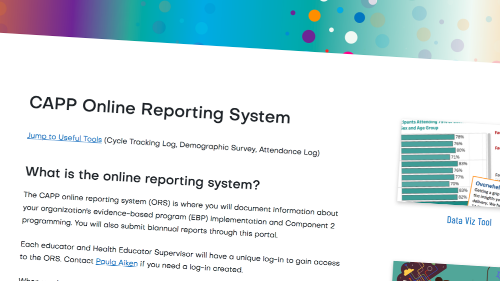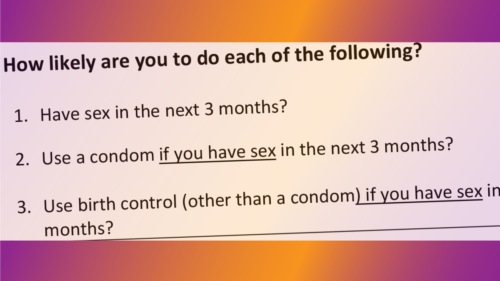CAPP: Project AIM
Project AIM (Adult Identity Mentoring) is a youth development-focused, 12-module intervention designed to reduce sexual risk behaviors among youth age 11-14. The program engages young adolescents in thinking about their possible futures, sparking the motivation to make safe choices. Originally, the program was designed for disadvantaged youth and evaluated as effective with African American middle school students. For additional information, see the Teen Pregnancy Prevention Evidence Review, Adult Identity Mentoring section.
Licensing
Project AIM is a licensed program developed by Dr. Leslie Clark of Children's Hospital Los Angeles. Prior to implementation, providers must enter (and pay for) an annual license agreement with the AIM Service Center. Curricula and additional training material have to be purchased from the AIM Service Center.
ACT for Youth has entered a training agreement with the AIM Service Center and supports two licensed trainers who will offer free training and technical assistance to CAPP providers.
Implementing Project AIM
Successful implementation of evidence-based programs requires significant planning. Use the template below to create your implementation plan.
Implementation guidelines make clear the program developer's recommendations as well adaptations you may need to consider. Take these guidelines into account as you plan for implementation. For example, fidelity requirements include that the program must be delivered by two trained facilitators.

Important Reminders
Pre-Post Surveys
Remember, pre-post surveys are required for each evidence-based program you implement. Learn more:
Project AIM Training
Educators must complete the Project AIM training offered by ACT for Youth prior to implementing the program. Scheduled trainings are posted on the CAPP Training Calendar:
Adaptations
While some adaptations will render a program ineffective (for example, turning a skill-building activity into a lecture), others are necessary (updating language to make a program more inclusive of specific populations, for example). Whenever possible, necessary adaptations should be planned in advance, working with ACT for Youth.
Since Project AIM is a licensed program, adherence to fidelity and quality of program implementation is closely monitored. All adaptation requests need to be discussed with ACT for Youth Project AIM trainers and approved by Dr. Leslie Clark.
Useful Tools
Planning: Creating a Master List
To help you plan, implement, and report adaptations systematically, ACT for Youth has developed planning tools for master lists of adaptations for each EBP. Health Educator Supervisors can use these tools to draft a master list. Below, we've provided a Be Proud! Be Responsible! (BPBR) master list as an example. Your ACT for Youth Support Team will work with you to finalize the list.
Preparation: Supplies/Equipment Checklist
This checklist serves as a reminder of what educators need to bring on site to facilitate each module.
On Site: Adaptation Notes Tool
When adaptations happen on the fly, they must be recorded. All data on adaptations can help us understand how to improve program implementation. To facilitate note-taking, the document below has a notes section for each activity.
Documentation
All adaptations — planned and unplanned — must be recorded in the CAPP Online Reporting System.



